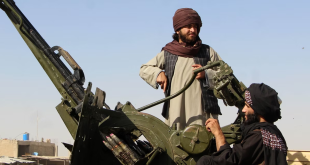The election controversies are seemingly further escalating while at the same time the Independent Election Commission (IEC) is under immense pressure – having already missed one deadline – as it is supposed to announce the preliminary results of the Afghan presidential election on Nov. 14th. The recent developments in tallying votes characterize this process to be the most sluggish one. After some delays, the Dermalog Company finally transferred all voter-related information to IEC. Meanwhile, over 1.8 million biometric votes, which met the standard criteria, were declared validas nearly one million votes were tossed out from the initial 1.9 million biometrically verified ballots. Moreover, the Independent Electoral Complaints Commission (IECC) also announced that votes of 105 polling stations have been invalidated and that they have decided to conduct the audit and recount of over 2,100 polling stations.
On top of all the slow-moving process, the Stability and Partnership team led by Abdullah Abdullah has called on the IEC to invalidate a further 300,000 biometric votes which are still in the server because they were, according to the electoral ticket, ‘fraudulent’. The team emphasizes that the recounting of votes should begin only after full filtering of votes has been conducted. The status quo and these claims are utter examples of unnecessary political pressures, which automatically result in the IEC’s lagging activities. Thus, it is also conceivable how it negatively impacts the functioning of IEC. If this continues to be the case and the electoral body gives in to these pressures, it would lose the already damaged and somewhat remaining credibility it has and subsequently be proven that it hasn’t been independent. About the apprehensions regarding IEC missing the deadline yet again, the electoral body should try its level best to take serious measures and avoid that. IEC should be more careful regarding the public vote because all hopes are pinned on it. It’s all up to IEC to screen out fraudulent votes and properly represent public mandate through transparent tallying.
 Afghanistan Times Latest News and Analysis from Afghanistan and the Region
Afghanistan Times Latest News and Analysis from Afghanistan and the Region




